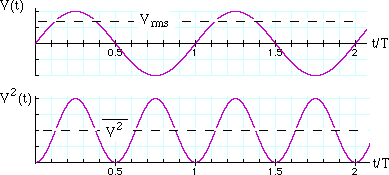Hi guys,
What is the difference between AVERAGE power and RMS power?
LM3886 is a 68W power amplifier, which I think 68W is the RMS power of it. But why in its datasheet in the first sentences it says:
""The LM3886 is a high-performance audio power amplifier
capable of delivering 68W of continuous average power to a
4Ω load and 38W into 8Ω""?
What is avarage power? what is the difference between it and RMS power?
What is the formula for that?
Thanks
What is the difference between AVERAGE power and RMS power?
LM3886 is a 68W power amplifier, which I think 68W is the RMS power of it. But why in its datasheet in the first sentences it says:
""The LM3886 is a high-performance audio power amplifier
capable of delivering 68W of continuous average power to a
4Ω load and 38W into 8Ω""?
What is avarage power? what is the difference between it and RMS power?
What is the formula for that?
Thanks


